Author: Hippo Research
Recently, the domestic AAA game "Black Myth: Wukong" has caused a global frenzy among gamers, attracting a large number of domestic and foreign players' attention and driving a sharp increase in related stocks in the capital market. The success of "Black Myth: Wukong" is largely due to its deep Chinese traditional cultural background and innovative storytelling, which to some extent also reflects the current gaming market's desire for high-quality content. It has also sparked our reflection on the development of blockchain games (GameFi). GameFi chain games can draw on some of the characteristics of this game in their development by combining specific cultural backgrounds or unique storytelling to attract players. For example, building a virtual world based on blockchain technology that allows players to experience culture and history while exploring, enhancing the immersion of the game.
How can GameFi chain games break through?
1. Improve the quality of the gaming experience
The success of "Black Myth: Wukong" is not only due to its cultural background but also its high-quality visual effects and smooth gaming experience. For GameFi projects to succeed, they must first ensure that the games themselves are interesting and highly attractive. This means that developers need to invest more time and resources in gameplay, rather than relying solely on the hype of blockchain technology. This is also one of the core issues of chain games: how to provide a similar high-quality experience in a decentralized environment, by optimizing smart contracts, increasing blockchain throughput, and reducing transaction costs to improve game performance, ensuring that players do not have a diminished experience when using chain games due to technical limitations.
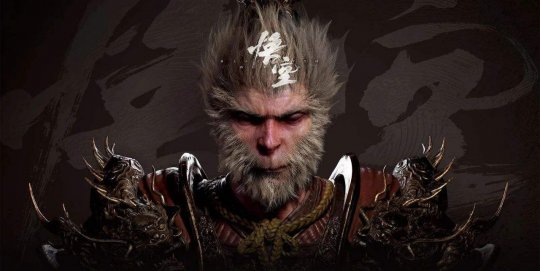
2. Sustainable economic model
GameFi typically relies on the "Play-to-Earn" model, where players earn cryptocurrency or NFT assets through in-game activities. However, we have experienced many chain game products and deeply understand that relying solely on these mechanisms may lead to the unsustainability of the economic system. Drawing on the design concept of "Black Myth: Wukong," chain games can design more complex and diversified economic models, such as introducing non-monetary reward mechanisms or reward systems based on contribution and participation, to ensure the stability and sustainability of the economic system. Many chain games have focused on tokens rather than the game itself. I believe that tokens should not be the core driving force of the game, but should serve as a value-added service or reward mechanism. Games that overly rely on token value often enter a death spiral when token value declines.
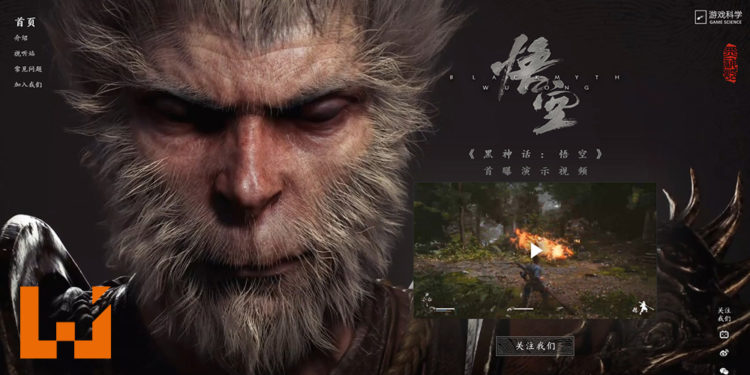
3. Deep community and user engagement
"Black Myth: Wukong" has a passionate player community behind it, which is an important factor in the game's success. Chain game developers should focus on community building, encourage player participation in the game development process, or empower players through forms such as DAO (decentralized autonomous organization) to enhance user stickiness and engagement. However, the premise is that the game itself must be good enough to warrant long-term player investment. Many development teams focus more on short-term profits and returns when initiating a project, due to the inherent risks and uncertainties of the crypto market, making it difficult for GameFi to produce a phenomenon like "Wukong."
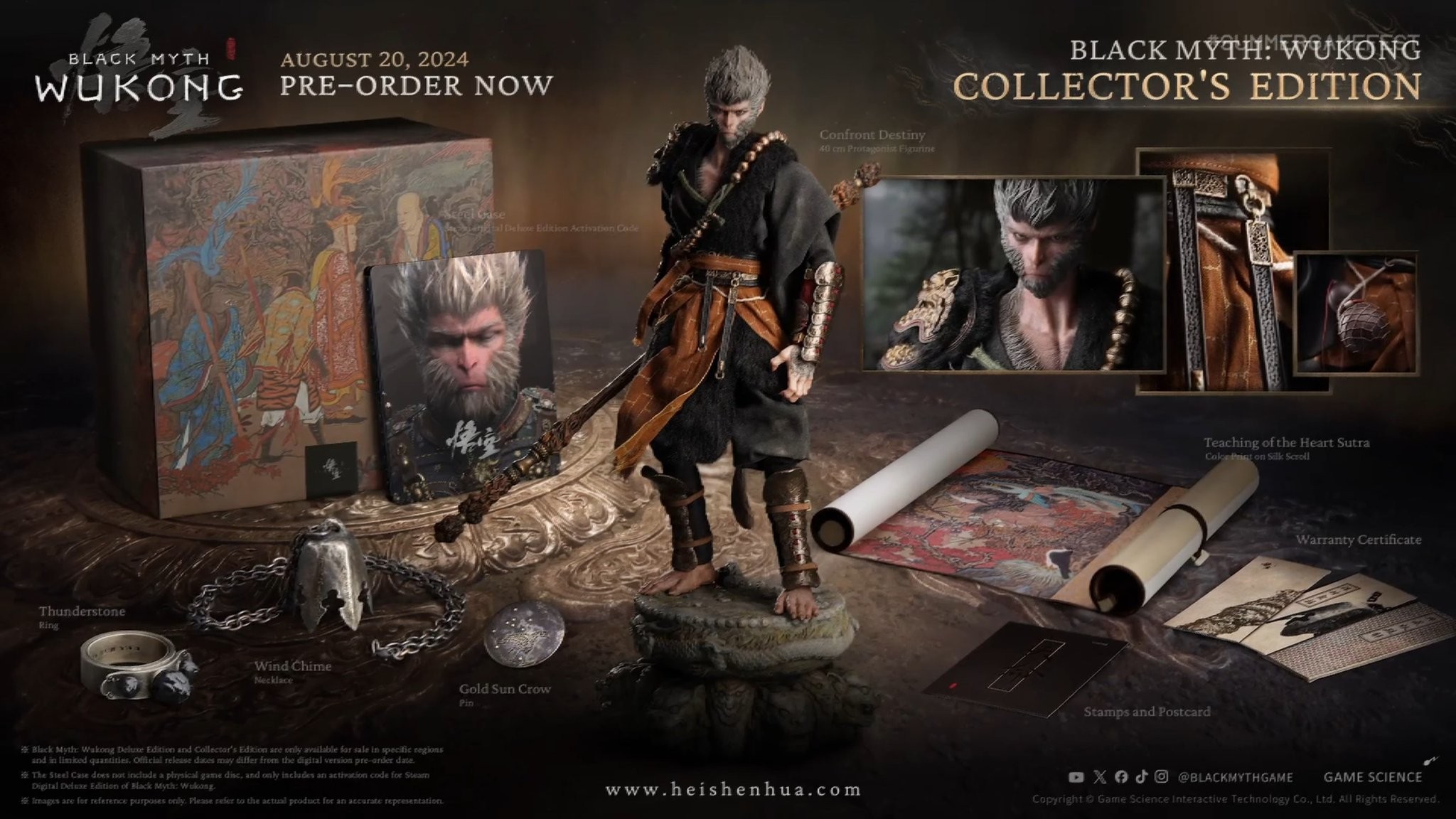
4. Deep integration of blockchain technology and game design
Currently, many chain games simply add a token economy to traditional mini-games and move them to the crypto market without putting much thought into the game itself. The success of "Black Myth: Wukong" can remind chain game developers that game design and blockchain technology need to be deeply integrated to create a unique gaming experience. For example, exploring cross-game asset interoperability based on blockchain, decentralized game world generation, and a truly player-driven economic system, using blockchain technology to achieve innovation that traditional games cannot. Blockchain technology can provide irrefutable asset ownership and transaction transparency, but if the implementation of these technologies leads to a decline in the gaming experience (such as high latency, complex operations), it would be counterproductive. GameFi needs to find a balance between technological innovation and user experience.
5. Deep bonding with players
In "Black Myth: Wukong," the characters and story are designed and owned by the developers, while in chain games, players can truly own in-game assets through NFTs and smart contracts. Chain game developers can draw on the importance placed on IP in "Black Myth: Wukong" by authorizing players to create and control game assets, enhancing players' sense of belonging and creativity, thereby creating a more attractive and sticky ecosystem.
Clash of Views
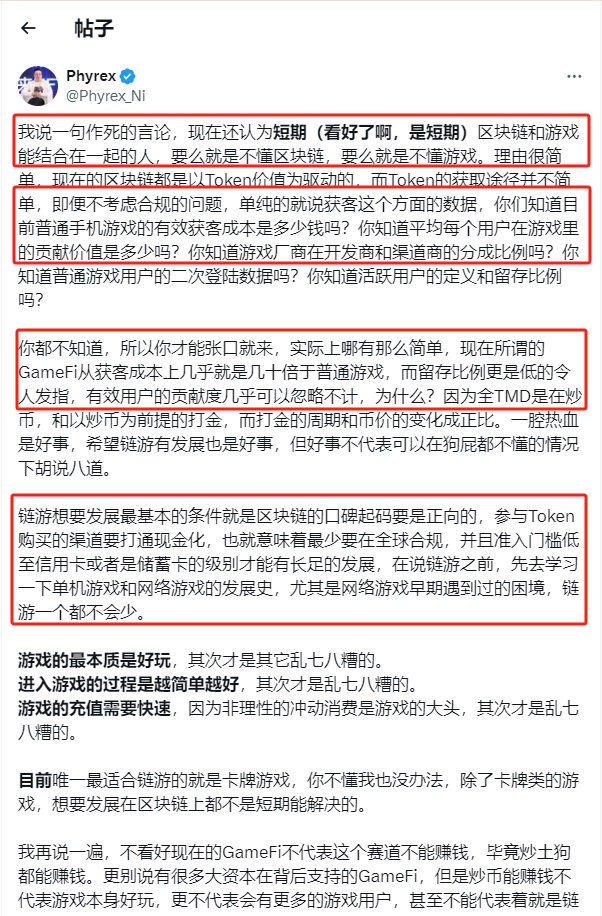
Excerpt from: https://x.com/Phyrex_Ni/status/1729030022500122917
Drawing on this KOL's article, I would like to express my opinion: The essence of games is entertainment, not making money. If the priorities are reversed, only demise awaits!
The reason is simple. If playing games can make money (not referring to esports), who would go out to work? Wouldn't everyone lie at home, receive airdrops, and play games to make money? Even games like "Journey to the West" and "Dungeon & Fighter" from our childhood, which can indeed make money through off-game trading of virtual game assets, are likely to have a time cost greater than the income. Only with this negative economic model, where input exceeds output, can games have a long-term future. This requires the team to focus on the development of the game's playability to retain users. If the goal is to attract users through gold farming, a large number of gold farming studios will immediately drag the game into a death spiral through scripting. As for how game development teams can attract players, I believe they can start from the playability of the game itself and a wealth effect of uncertainty, which means not every player can make a profit in the game, but there is a chance to earn a high income, just like why the MEME market is so hot. Most of the reason is due to its high wealth effect. Chain game development teams can also integrate this core logic into the game.
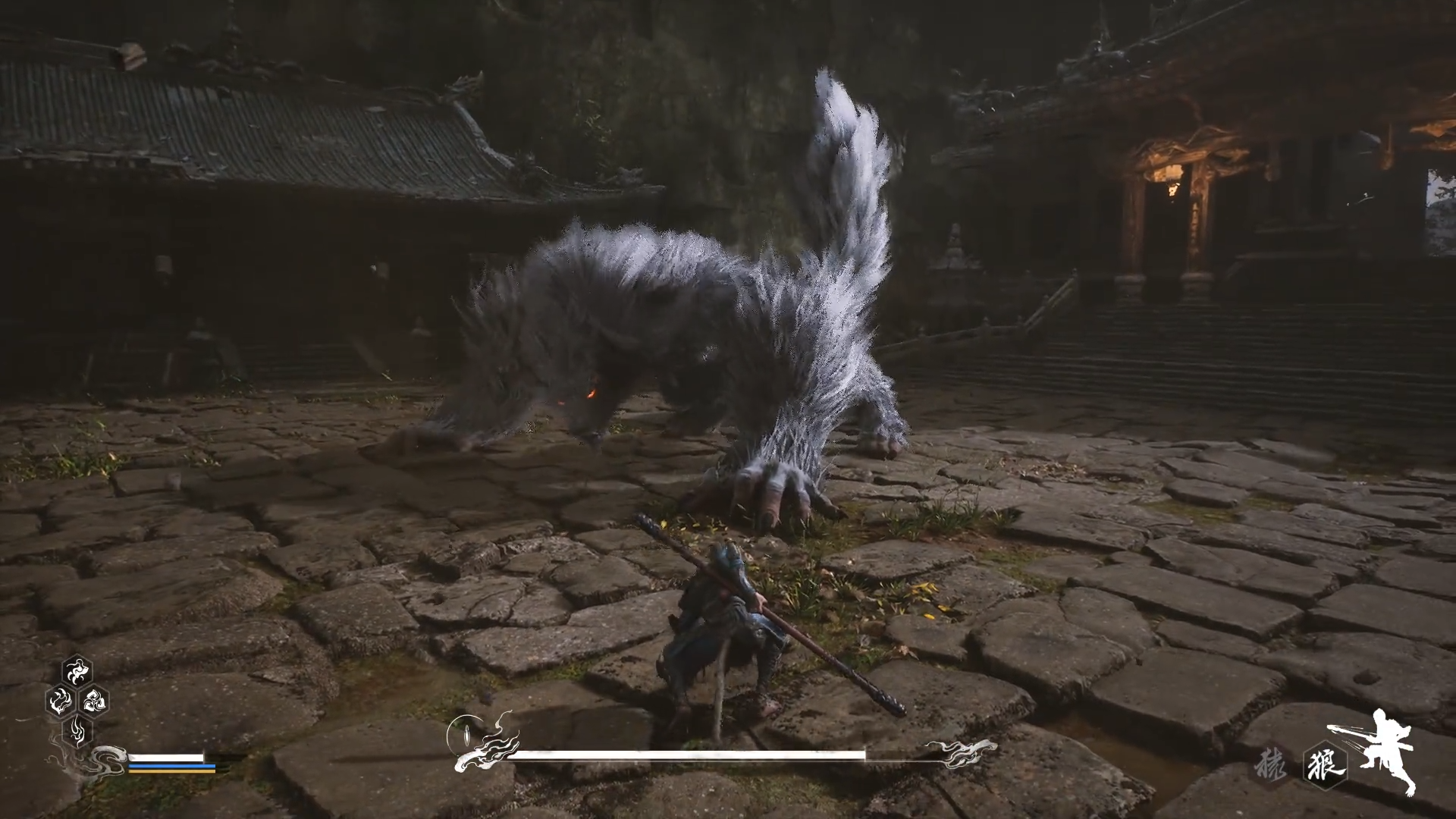
So the question is, why should games go on the chain?
Web2 games, regardless of the experience in terms of graphics, controls, etc., are not on the same level as chain games. Wouldn't everyone prefer to play Web2 games? Why play chain games? First, I believe that putting games on the chain can solve the pain points of traditional Web2 games:
1. Establishing ownership of game assets: In traditional Web2 games, virtual items purchased by players (such as skins, weapons, characters, etc.) actually belong to the game company, and players only have the right to use them. If the game closes or the player's account is banned, these assets will disappear. Through NFT (non-fungible token) technology, blockchain can allow players to truly own digital assets in the game, which can be bought, sold, and transferred outside the game, with ownership records being transparent and tamper-proof.
2. Realizing the monetization of game assets: There are many problems with the monetization of traditional game assets, including but not limited to compliance, fund security, and the uncertainty of off-game trading platforms, making virtual game assets difficult to monetize. Blockchain can effectively solve this problem.
3. Solving the problem of interoperability of game assets: In Web2 games, players' assets are usually unable to be transferred or used in different games. Blockchain can achieve cross-game asset interoperability, allowing players to sell assets from one game and transfer them to another, or even freely trade between different game ecosystems, greatly increasing the value and efficiency of player assets.
4. Improve the transparency and fairness of game mechanisms: The game mechanisms and randomly generated rewards or loot systems in Web2 games often lack transparency, leading to player doubts about their fairness. Blockchain, through smart contract technology, can make the execution process of game mechanisms transparent, ensuring fairness. All operation records can be viewed and verified on the chain, thereby enhancing player trust in the game.
5. Prevent cheating and hacking: Traditional Web2 games face serious cheating and hacking issues, especially those involving virtual economies. The decentralized nature of blockchain can effectively prevent single-point failures, while the automatic execution and tamper-proof nature of smart contracts can reduce cheating behavior. For example, reward distribution and competition results in the game can be automatically executed through smart contracts, reducing the possibility of manipulation and cheating.
6. Decentralized governance and decision-making: In Web2 games, all decision-making power is held by the development company, and player opinions often have little direct impact on the game's development direction. Blockchain introduces the DAO (decentralized autonomous organization) model, allowing players to participate in voting by holding game tokens, collectively deciding on key decisions such as game updates and rule modifications. This decentralized governance method can increase player engagement and loyalty to the game.
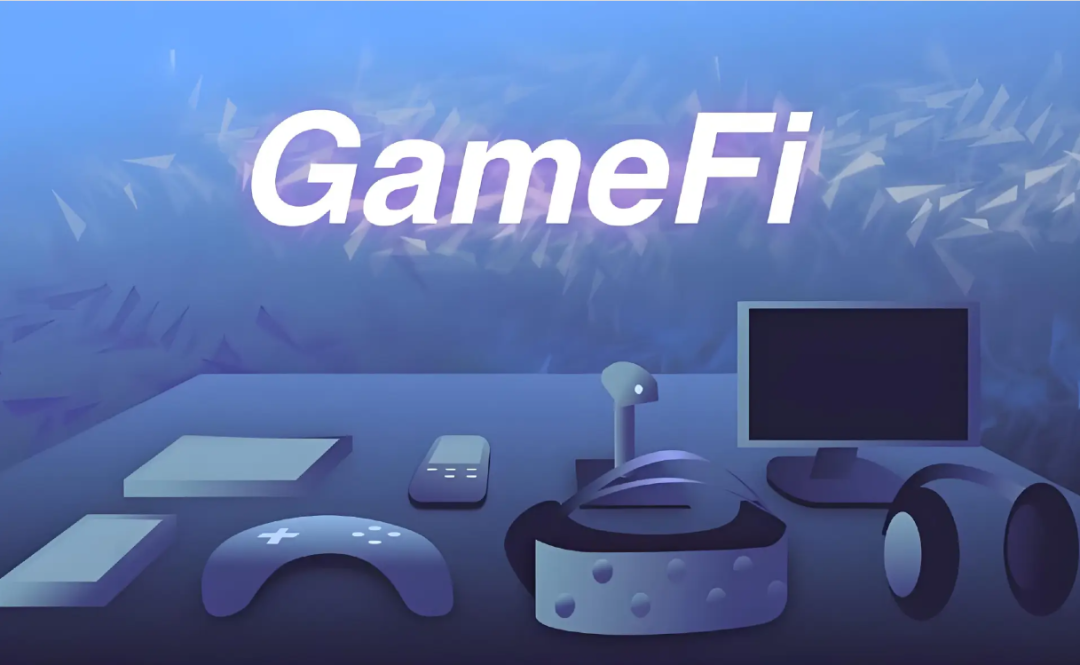
The current problem with chain games is that project development teams tokenize the game, not the players. The reason is that the development team sees tokens as the most important source of income in the later stages, obtaining substantial profits through tokens, rather than focusing on providing the experiential and playable aspects of the game to the players. This leads to problems in all subsequent logic. Taking the example of "Wukong," the development team spent a significant amount of resources in the early stages to create this product, taking on significant risks, and their main profit point is only selling game registration codes. This type of single-player game will not have other sources of income within the game, unlike companies that can sell skins to make money in games like League of Legends. The success of "Wukong" is mainly due to the high quality and playability of the game, which attracted the market to pay for it. There is a demand in the market for high-quality games like this, and it does not require a high market education cost. This is something that chain game development teams should deeply consider.
Conclusion
Finance and games are the two products where blockchain is most easily applied, and games themselves have high user stickiness and can easily trigger viral spread. By combining the successful experience of "Black Myth: Wukong" and the advantages of blockchain technology, GameFi chain games can provide high-quality gaming experiences while achieving innovative and sustainable economic models, continuously iterating chain game products, and thereby driving further development of the entire industry.
免责声明:本文章仅代表作者个人观点,不代表本平台的立场和观点。本文章仅供信息分享,不构成对任何人的任何投资建议。用户与作者之间的任何争议,与本平台无关。如网页中刊载的文章或图片涉及侵权,请提供相关的权利证明和身份证明发送邮件到support@aicoin.com,本平台相关工作人员将会进行核查。




